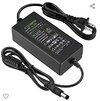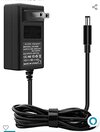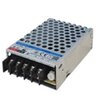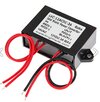Hello!
I have no experience with electronics of any kind. I would like to buy or build 3, low profile, motorized rotating display disks for a display case. You can see the mockup for the display case attached.
Ideally, I would have the rotating display disks rotate at a slow pace, controlled by a switch built into the display case. If it doesn’t sacrifice the profile, I would like to have the speed be variable and adjustable by a knob on the swtich, with a high bound cap on the speed. The disks will be supporting a series of statues. The largest of which is Width: 20.5” Height: 22.5” Depth: 17” Weight: 30 lbs. Note that I would just buy a rotating display disk, however they are all to high. I can drill into the ¾ inch wood platform the disks sits on to reduce the height if need be.
My primary questions are:
• Ideally, the rotating disk and motor would be less than an inch high, if that isn’t possible, I am wondering what the lowest form factor as possible would be? I am not sure if anyone has any ideas of small form factor motors?
• What are all the parts I would need to buy in order to make this? Do you have any recommendations?
What is the best way to wire everything together?
I am of course open to any and all suggestions, or better ways to build the project. Thank you so much in advance for your time and help, it is much appreciated.
I have no experience with electronics of any kind. I would like to buy or build 3, low profile, motorized rotating display disks for a display case. You can see the mockup for the display case attached.
Ideally, I would have the rotating display disks rotate at a slow pace, controlled by a switch built into the display case. If it doesn’t sacrifice the profile, I would like to have the speed be variable and adjustable by a knob on the swtich, with a high bound cap on the speed. The disks will be supporting a series of statues. The largest of which is Width: 20.5” Height: 22.5” Depth: 17” Weight: 30 lbs. Note that I would just buy a rotating display disk, however they are all to high. I can drill into the ¾ inch wood platform the disks sits on to reduce the height if need be.
My primary questions are:
• Ideally, the rotating disk and motor would be less than an inch high, if that isn’t possible, I am wondering what the lowest form factor as possible would be? I am not sure if anyone has any ideas of small form factor motors?
• What are all the parts I would need to buy in order to make this? Do you have any recommendations?
What is the best way to wire everything together?
I am of course open to any and all suggestions, or better ways to build the project. Thank you so much in advance for your time and help, it is much appreciated.






